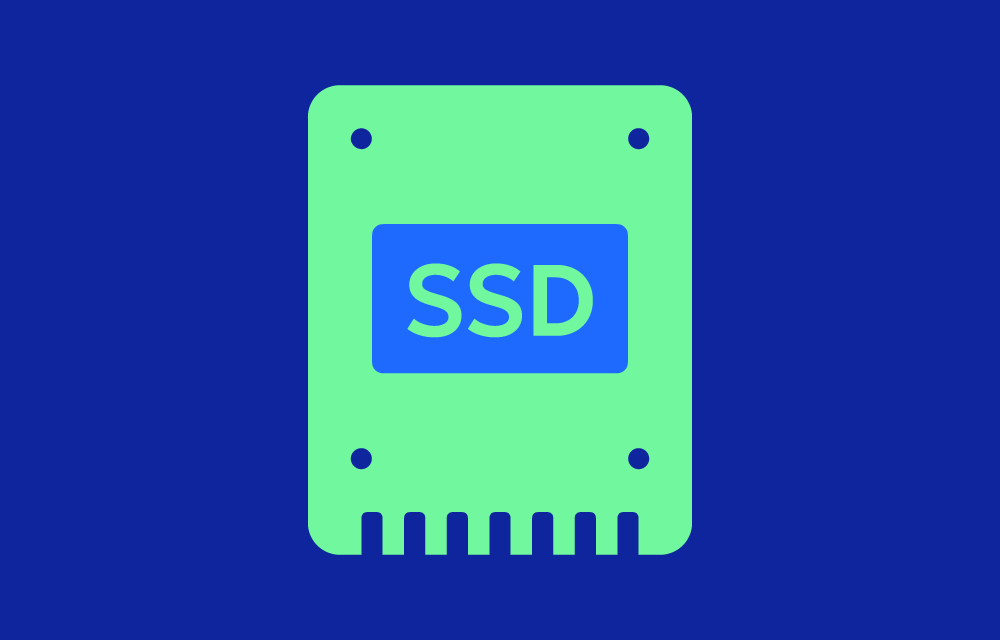History
The development of SSDs dates back to the 1950s and 60s, but they became commercially viable in the late 2000s. The significant milestone was the introduction of NAND flash memory by Toshiba in 1989, which laid the foundation for modern SSDs. By the mid-2000s, SSDs began appearing in high-performance computing environments, and by the 2010s, they became mainstream in consumer electronics.
Market
The SSD market has grown rapidly, driven by the increasing demand for faster, more reliable storage solutions. As of 2023, the global SSD market was valued at approximately $34 billion, with projections to reach over $60 billion by 2028. Major players in the market include Samsung, Western Digital, Intel, and Micron. SSDs are widely used in personal computers, enterprise servers, and data centers, competing with traditional HDDs and newer technologies like NVMe and M.2 drives.
Value proposition
SSDs offer several advantages over traditional HDDs:
- Speed: SSDs provide significantly faster read/write speeds, which improves system performance and reduces boot and load times.
- Reliability: With no moving parts, SSDs are less prone to mechanical failure, increasing data reliability.
- Energy Efficiency: SSDs consume less power, which is beneficial for both mobile devices and large data centers.
- Durability: SSDs are more resistant to physical shock and temperature variations, making them suitable for a wider range of environments.
Challenges
Despite their advantages, SSDs face several challenges:
- Cost: SSDs are more expensive per gigabyte compared to HDDs, although this gap is narrowing.
- Lifespan: SSDs have a limited number of write cycles, which can impact their longevity, particularly in write-intensive applications.
- Data Recovery: Recovering data from a failed SSD is more complex and less likely to be successful compared to HDDs.
Key features
- NAND Flash Memory: The primary storage medium in SSDs, available in different types such as SLC, MLC, TLC, and QLC.
- Controller: Manages data storage, retrieval, and error correction.
- TRIM Support: Helps maintain optimal performance by clearing unused data blocks.
- Wear Leveling: Extends the lifespan of the SSD by distributing write and erase cycles evenly across the memory cells.
- Encryption: Provides data security through hardware-based encryption.
Types of SSDs
- SATA SSDs: Use the SATA interface, offering a balance between cost and performance.
- NVMe SSDs: Use the PCIe interface, delivering much higher speeds compared to SATA SSDs.
- M.2 SSDs: Compact form factor SSDs that can use either SATA or NVMe interfaces, popular in laptops and ultrabooks.
- U.2 SSDs: Use the PCIe interface, designed for enterprise and data center applications.
Applications
- Personal Computers: Boosting system performance in desktops and laptops.
- Enterprise Servers: Enhancing the speed and reliability of data centers and cloud services.
- Gaming Consoles: Reducing load times and improving game performance.
- Embedded Systems: Providing robust storage solutions for industrial and IoT devices.
How to set up SSDs
Setting up an SSD typically involves:
- Installation: Physically installing the SSD in your device, which can involve connecting to a SATA or PCIe slot.
- Cloning: Transferring data from an existing drive to the new SSD using cloning software.
- Configuration: Adjusting system settings, such as enabling AHCI mode in the BIOS for optimal performance.
- OS Installation: Installing a fresh operating system if not cloning from an existing drive.
- Firmware Updates: Keeping the SSD firmware up to date for improved performance and reliability.
Similar concepts
- HDD (Hard Disk Drives): Traditional storage devices with moving parts, slower and less reliable than SSDs but cheaper per gigabyte.
- NVMe (Non-Volatile Memory Express): A protocol designed to maximize the performance of SSDs connected via PCIe.
- M.2 Drives: A form factor for SSDs, supporting both SATA and NVMe interfaces.
References
- Kioxia: The History of Flash Memory
- Samsung Solid State Drive: White paper
- Intel: SSD Performance and Reliability
Further reading
- The evolution of solid state drives (SSDs)
- What’s the Difference Between an SSD and a Hard Drive
- SSD vs Hard Drive vs Hybrid Drive



